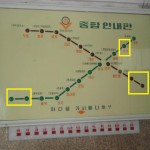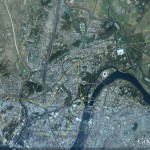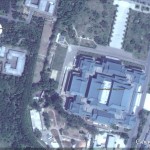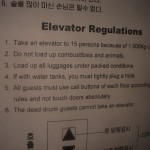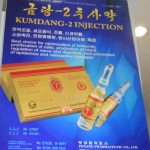According to Business Week:
Gaeseong, which is within sight of South Korean and U.S. guard posts along the Demilitarized Zone, was developed as a joint special economic zone in 2005 and now employs about 50,000 North Koreans, according to the Unification Ministry in Seoul.
More than 120 South Korean companies, including Daewha Fuel, underwear maker Good People Co. and watchmaker Romanson Co. (026040) paid the North Korean government about $60 million to $70 million last year to cover labor costs for workers, said Park Soo Jin, the deputy spokeswoman at the Unification Ministry. Authorities in Pyongyang then paid the employees in local currency and vouchers, she said.
Trade Minister Bark Tae Ho said on March 14 that he will try to persuade the U.S. and European Union to recognize products made in Gaeseong as South Korean.
Singapore Tariffs
The EU and South Korea have agreed to establish a committee this year to examine the issue, Tomasz Kozlowski, ambassador for the EU delegation in Seoul, said in an e-mailed statement. Aaron Tarver, a spokesman at the U.S. Embassy, said in an e-mail that the trade pact does not include any products from North Korea, including those from Gaeseong, without commenting further.Singapore has reduced tariffs covering more than 4,000 products from Gaeseong under its bilateral trade pact with South Korea, said Lee Sang Mok, Deputy Director at Korea Customs Service. Some products are also covered by agreements with the 10-member Association of Southeast Asian Nations, India, Peru and the European Free Trade Association consisting of Switzerland, Iceland, Liechtenstein and Norway, Lee said via e- mail and telephone.
The value of output from Gaeseong jumped from $14.9 million in its first year to $402 million in 2011, according to the Unification Ministry. During the past seven years, its production totaled $1.5 billion. That compares with $40 billion for North Korea’s annual gross domestic product, according to the CIA World Factbook.
“The U.S. seems to want more progress in North Korean nuclear and human rights issues before including Gaeseong in FTA,” IBK’s Cho said.
…
Yoo of Daewha Fuel Pump said he plans to spend 1 billion won ($885,000) this year to boost capacity in Gaeseong by 50 percent and forecasts sales to jump to 65 billion won this year from 45 billion won in 2011. His company, which also makes parts in plants in South Korea, supplies automakers including Hyundai Motor Co., Honda Motor Co. and Nissan Motor Co., he said.
The minimum monthly base salary paid by companies at Gaeseong is about $64, according to the Unification Ministry’s Park. Yoo, who was speaking at Incheon near Seoul, estimated labor costs would be 20 times higher in South Korea and three times higher in China.
“The security issue is of course a big risk but every business has a risk,” Yoo said. “Gaeseong has survived all the clashes and threats, including the sinking of a warship and the shelling of a South Korean island”.
Read the full story here:
North Korea’s Gaeseong Pushed for Inclusion in FTA
Business Week
Eunkyung Seo and Sangwon Yoon
2012-3-22

